
A young girl and her grandmother catch crabs and fish in the shallow waters near Bednell Bay in northeast England. Climate change is already affecting biodiversity in the area: Low water availability in the summer, and increased flooding and coastal erosion affects the rich diversity of habitat and species found there. Photo: SolStock
Without nature, we are nothing. Yet humans are destroying the environment and the living creatures that call our planet home at unprecedented rates — at our own peril. From increasing the threat of disease to disrupting our global food chain, biodiversity loss across the globe is threatening the very foundation of our future and the well-being of everyone, everywhere.
The devastating effects of climate change on human health are already on display: famines triggered by once-in-a-century droughts or flooding; death and suffering wrought by some of the strongest hurricanes and heat waves in modern history.
But what is less well known is how biodiversity loss is harming our health and threatening the basic ecological cycles that keep us alive.
“We are out of harmony with nature,” UN Secretary-General António Guterres told world leaders at last year’s Biodiversity COP. “Humanity has become a weapon of mass extinction. … And ultimately, we are committing suicide by proxy.”
One reporter called biodiversity loss a “mounting under-the-radar crisis,” and disturbing signs are appearing all over the globe, from beaches awash in sargassum seaweed to massive fish die-offs in polluted waterways. In fact, according to the United Nations Environment Programme, biodiversity is declining faster than at any other time in human history. Right now more than 1 million species are facing extinction.
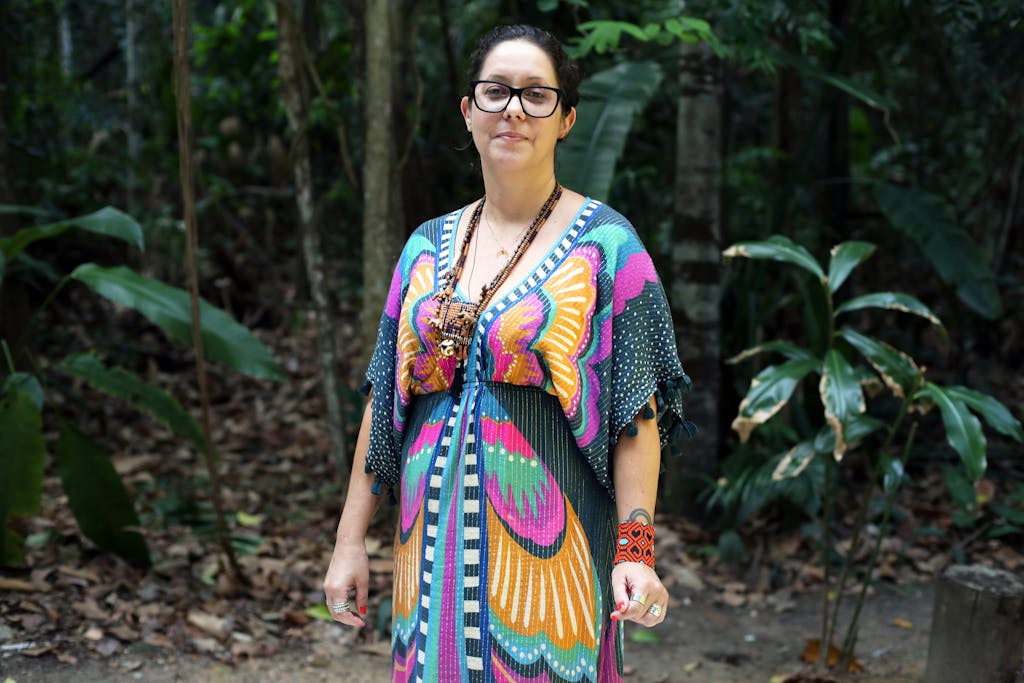
Veterinary scientist Dr. Alessandra Nava in Manaus, Brazil. Photo: Michael Dantas
In the Amazon, a Call for One Health
There are few places on the planet where the threat of biodiversity loss is more evident than the Amazon, which is being destroyed by record levels of deforestation despite being home to one-third of the planet’s species — the greatest concentration of biodiversity on Earth.
Because habitat destruction brings humans and wildlife into closer contact, it dramatically increases our risk of exposure to “zoonotic spillover,” which occurs when pathogens — bacteria or viruses that cause disease — jump from animals to humans. In fact, more than 75% of emerging infectious diseases in humans are caused by pathogens that originally circulated in animals, leading to millions of deaths each year. According to some estimates, as many as 1.6 million viruses are contained within mammals and birds across the globe, some of which could be deadly if or when they become transmissible to humans.
Dr. Alessandra Nava, a veterinary scientist based in the Brazilian city of Manaus, has made the rainforest her laboratory. She has dedicated her career to collecting samples from small mammals for the Fiocruz Amazônia Biobank, a research collection she helps oversee as part of a growing effort to track the spread of zoonotic pathogens, and perhaps ultimately help predict or even prevent another pandemic.
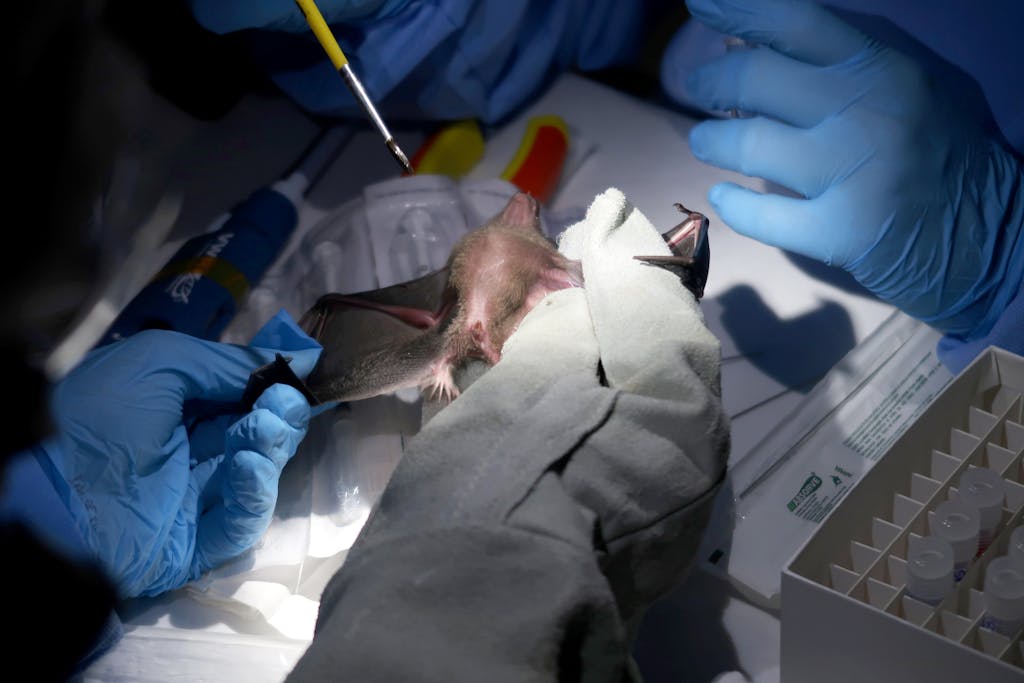
Veterinary researcher Dr. Alessandra Nava draws a blood sample from a bat captured near Manaus, Brazil. Her work is part of a growing effort to track the spread of zoonotic diseases in the Amazon rainforest as deforestation brings humans and wildlife into closer contact. Photo: Courtesy of Alessandra Ferreira Dales Nava
Her work exemplifies a holistic approach, fittingly dubbed “One Health,” that recognizes the indivisible link between animal, human, and environmental well-being. The UN-led initiative brings together the public health, veterinary, and environmental sectors and promotes food and water safety, nutrition, the control of zoonotic diseases, pollution management, and more.
“Nobody talked about ‘One Health’ 25 years ago,” Dr. Nava says. “When we keep the forest intact, it serves as a buffer zone.”
Protecting Nature, Just as Nature Protects Us
A higher risk of infectious outbreaks is just one of the many repercussions of biodiversity loss on human health.
By disrupting the delicate ecological balance that regulates our planet’s oxygen, water, and nutrient cycles, we risk unraveling the entire food chain by harming the many different species — large, small, and microscopic alike — that work together to pollinate, nourish, and ultimately sustain all of the plants and animals we consume. According to the UN Food and Agriculture Organization, for example, the alarming drop in the global bee population could upend agriculture as we know it.
Species extinction and habitat destruction also mean forfeiting the untapped potential of our natural world to yield new medicines for treating health problems. In fact, 70% of all cancer drugs today are natural or bio-inspired products. And scientists are still discovering new species each year, including a fungus that can eat plastic.
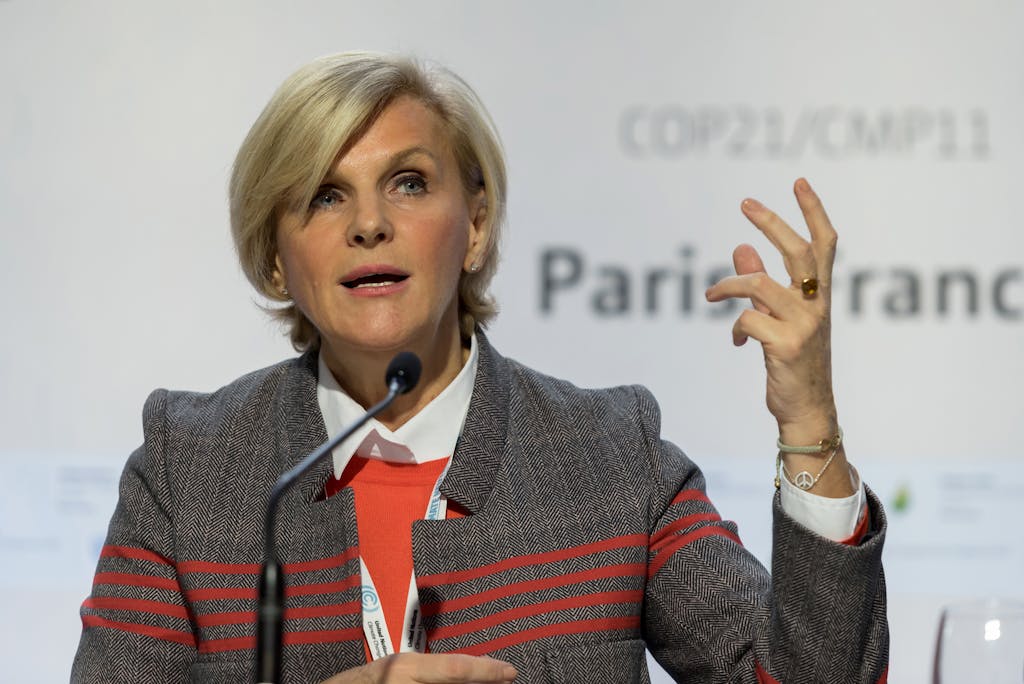
Dr. Maria Neira, WHO Director, Department of Public Health, Environmental and Social Determinants of Health, delivers a speech during the UN Climate Change Conference, COP21, in December 2015. Photo: Jonathan Raa/NurPhoto
Nature also provides significant and often underestimated mental health benefits for people. Dr. Maria Neira, Director of the Department of Environment, Climate Change and Health for the World Health Organization, witnessed this firsthand while working in refugee camps in Central America. There, she helped launch a project to grow traditional medicinal herbs that helped displaced families cultivate a sense of purpose, community, and beauty in an otherwise desperate situation.
“You rely on nature if you want to survive: It gives you food, it gives you water, it gives you trees that will protect the quality of the air you breathe,” Dr. Neira says. “It’s common sense: You need to protect what is protecting you. If we don’t, we are the losers, not the planet.”
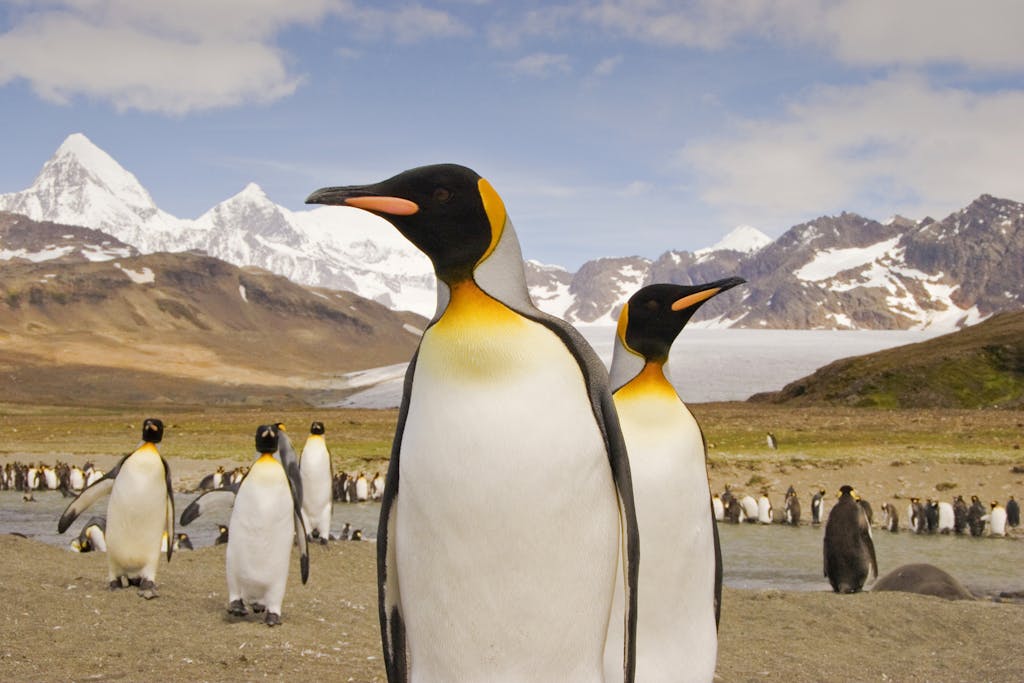
The King Penguins of South Georgia Island are an indicator species, which means that the size and health of their populations indicates the overall health of their ecosystem. A healthy penguin population indicates a healthy marine ecosystem. Photo: Gen Productions
Halting the ‘Biodiversity Apocalypse’
Here’s the good news: Solutions already exist to restore and preserve the ecological well-being of the planet. Experts and advocates have long championed several critical ways to protect both biodiversity and human health.
Protecting and restoring natural habitats
Conservation is key. Today, according to the UN, one-third of the planet’s land is degraded, making it harder to feed a global population that recently surpassed 8 billion. Restoring biodiversity could also slow down climate change by storing carbon dioxide from the Earth’s atmosphere. Land and ocean ecosystems currently absorb 60% of human-caused emissions.
“Coastal and marine ecosystems like mangroves, sea grasses, and wetlands store far more carbon than terrestrial forests, sometimes up to 10 times as much,” says Susan Ruffo, the UN Foundation’s Senior Advisor for Ocean and Climate. During hurricanes, mangroves and other natural habitats can also shield coastlines from storm surges and flooding, averting loss of life and health impacts including respiratory illnesses, post-traumatic stress disorder, and infectious outbreaks that emerge after extreme weather events.
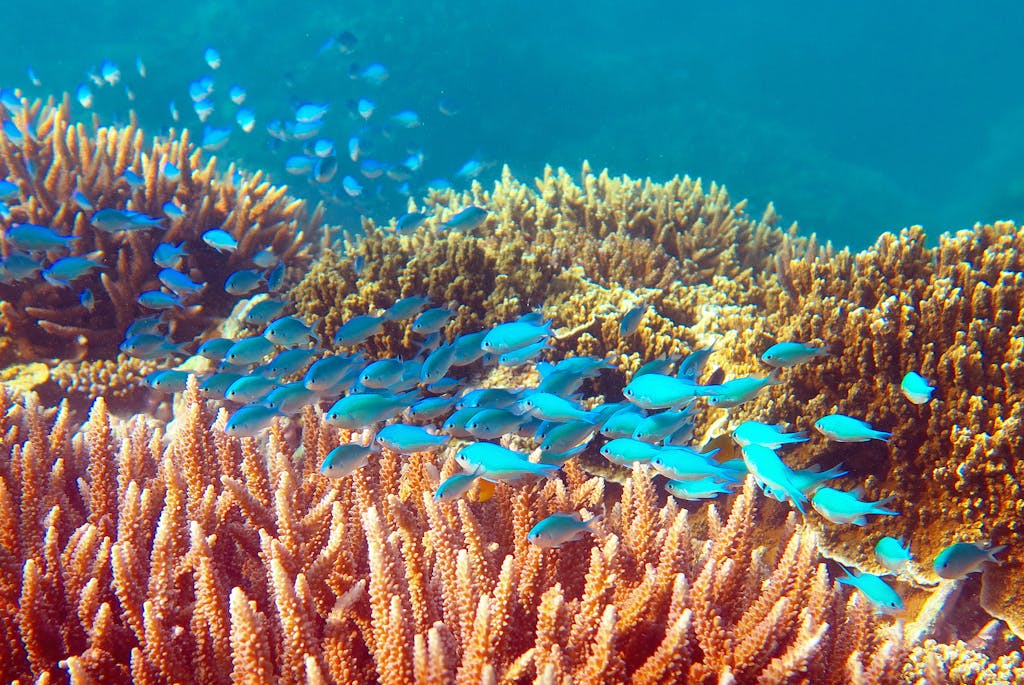
On the Great Barrier Reef, a school of blue fish swims above hard coral that’s beginning to bleach Coral bleaching can occur when sea surface temperatures rise or when there are changes in water quality, increased sun exposure and extreme low tides that also cause corals to bleach. Photo: Matt Francey
Prioritizing island nations
Islands play an outsized role in the planet’s biodiversity, hosting 20% of the Earth’s species despite taking up less than 4% of its surface area, according to Dr. Shobha Maharaj, a climate scientist and lead author for the latest report of the Intergovernmental Panel on Climate Change. The Caribbean, for instance, is home to 10% of the world’s coral reefs and approximately 1,500 species of fish and marine mammals. These “island-endemic” species are especially vulnerable to habitat destruction, pollution, and environmental changes. In fact, Dr. Maharaj says 80% of known species extinctions have occurred on islands. Yet there is a troubling absence of data from these places, Dr. Maharaj says, often as a result of inadequate investment and resources. A citizen of Trinidad and Tobago in the Caribbean, she says more people from island nations, particularly small island developing states, should be included in international decision-making to ensure that their unique insights, as well as the unique health threats they face, can inform global policy.
Supporting sustainable agriculture, fishing, shipping, and land use
Humanity’s continued reliance on industrial practices that raze the landscape — like oil drilling, fracking, mining, and factory farming — is destroying ecosystems while displacing, contaminating, and killing a vast number of species. A recent study found that croplands are expanding 58 times as fast today as they were 20 years ago, mainly to feed livestock amid the booming demand for meat.
Another priority: Promoting sustainable use of the ocean while addressing the hazards of industrial production, consumption, and the international shipping industry on life under water. Overfishing, ocean acidification, and plastic pollution are harming marine biodiversity and, in turn, reducing global fishing stocks, which 1 billion people worldwide rely on as a primary protein source.
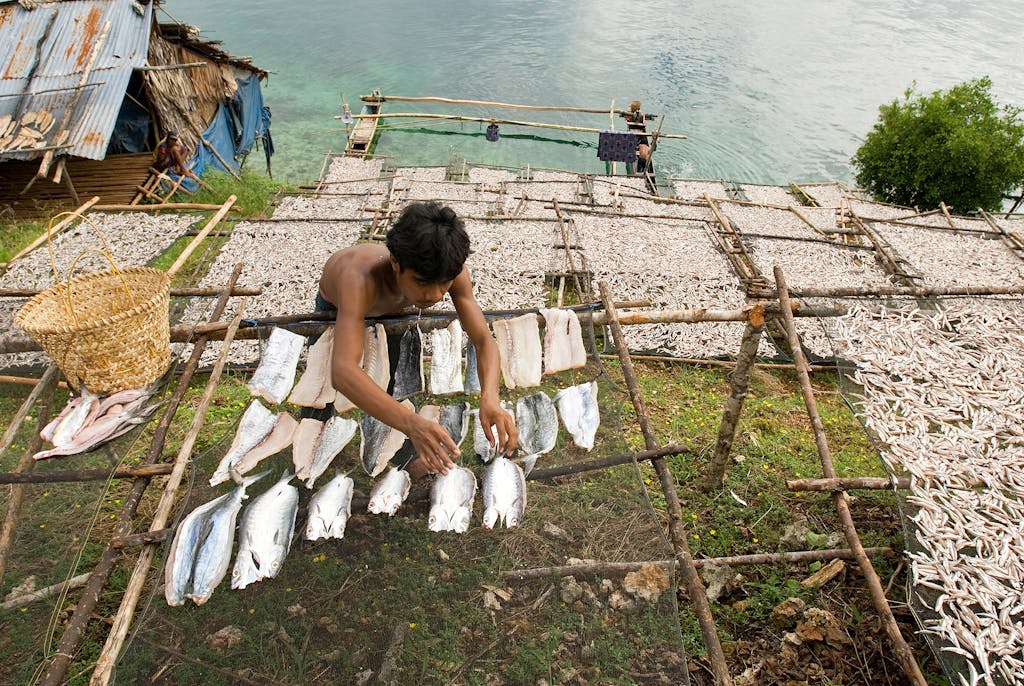
Butonese fishermen dry their catches under the sun in a temporary fishing village they set up on Waigeo Island, Raja Ampat Indonesia. Photo: Zafer Kizilkaya
Respecting Indigenous knowledge and rights
Indigenous people have long served as the planet’s most effective environmental stewards. In fact, research confirms that when Indigenous communities control the land, biodiversity flourishes. Yet only a few countries recognize Indigenous land rights. At the same time, given their close relationship and reliance on nature, Indigenous communities are often among the first to face the consequences of biodiversity loss. That’s why safeguarding their land rights, traditional knowledge, and political representation will be crucial to protecting the health of the land, air, water, soil, and wildlife and, in turn, human health overall.
This means incorporating Indigenous wisdom on the environment into global policymaking. In Indonesia, for example, a community-based coastal management system called sasi uses a traditional calendar to determine when certain species of fish can be harvested. In doing so, fishers avoid inadvertently depleting fish stocks during essential breeding seasons and, thus, maintain local food security.
Now or Never for Nature
Protecting global biodiversity is too complex to be tackled by one country alone. Recent diplomatic breakthroughs such as the “30×30” initiative to protect 30% of the Earth’s land and water by 2030 could signal a turning point for global cooperation on ecological health.
But one thing is clear: Time is running out to take meaningful action on biodiversity loss. In the Amazon, for example, scientists warn that cutting down too many trees could result in the entire ecosystem degrading into grasslands — an irreversible tipping point that would drastically alter how the planet circulates water and oxygen, putting human health at risk.
“Without nature, we have nothing. Without nature, we are nothing,” UN Secretary-General António Guterres said at last year’s Biodiversity COP, where he urged world leaders to rally around a plan that “beats back the biodiversity apocalypse” by tackling its root causes: unsustainable consumption and production that views ecosystems as playthings of profit.
“It’s time,” he declared, “to forge a peace pact with nature.”
BUILD BACK BIODIVERSITY
Biodiversity connects all living things. Thanks to the historic Global Biodiversity Framework, we have a pathway to protecting and living in harmony with nature. And everyone can play a part.
from Humanitarian activities – My Blog https://ift.tt/daBC1mP
via IFTTT


